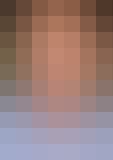Learners will be introduced to the problems that vision faces, using perception as a guide. The course will consider how what we see is generated by the visual system, what the central problem for vision is, and what visual perception indicates about how the brain works. The evidence will be drawn from neuroscience, psychology, the history of vision science and what philosophy has contributed. Although the discussions will be informed by visual system anatomy and physiology, the focus is on perception. We see the physical world in a strange way, and goal is to understand why.
An Empirical Explanation Based on Accumulated Experience (part 1)

Loading...
Reviews
4.6 (262 ratings)
- 5 stars75.57%
- 4 stars17.55%
- 3 stars4.19%
- 2 stars1.52%
- 1 star1.14%
XG
Apr 12, 2017
The course has got everything clearly conveyed and has enabled me (not at all familiar with the topic) to understand the major points. Thanks very much for offering it~
CY
Sep 7, 2020
It is such a nice course. The lecturer is so inspiring and 'provocative'. The perception theory was explained in a very novel way.
From the lesson
Seeing Lightness, Darkness and Color
Taught By
Dale Purves
M.D.

